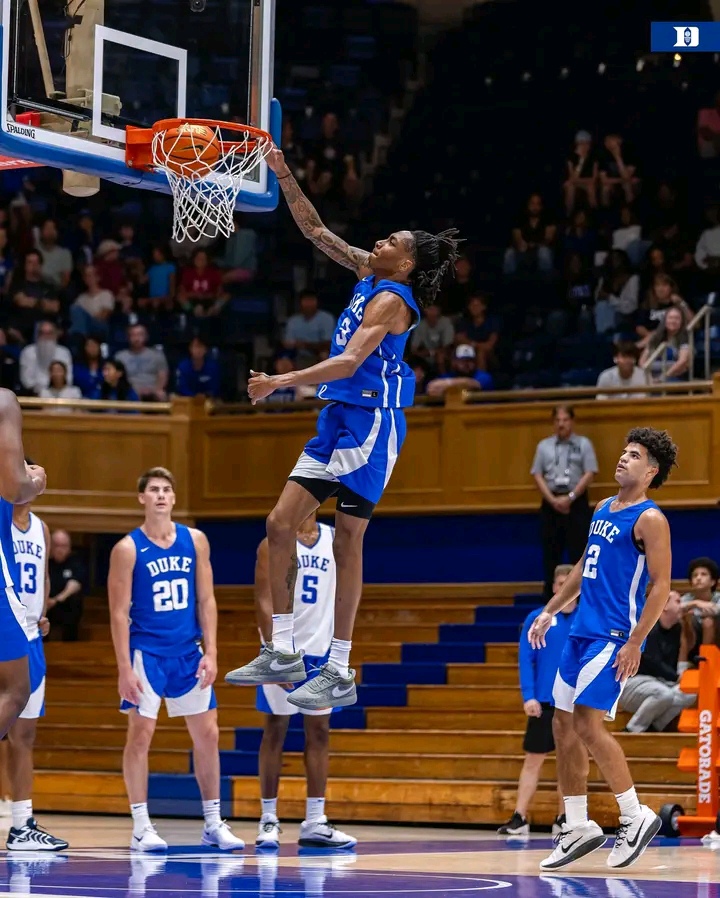What looked like another typical offseason in Durham has quietly turned into one of the most strategic overhauls Duke Basketball has seen in years. While most fans focused on incoming freshmen and returning talent, Jon Scheyer and his staff made one subtle coaching adjustment that’s completely reshaped how the Blue Devils operate on offense — and it’s already paying major dividends.
The Shift: Positionless Flow Offense
Scheyer didn’t just tweak the playbook — he reimagined the philosophy. Rather than relying on rigid sets or heavy isolation, Duke has shifted to a positionless flow offense built on constant movement, spacing, and empowered decision-making. Every player on the floor has the green light to read, react, and make plays — no matter their position.
The core change? Decentralizing shot creation and letting the offense evolve through movement. That has completely opened things up for the roster’s most versatile threats.
Who’s Thriving in the New System?
Dame Sarr, the freshman sensation from Italy, is already drawing comparisons to past Duke stars — but it’s how he fits this new scheme that’s turning heads. With elite instincts and a smooth handle, Sarr has become a mismatch nightmare. He can shoot off movement, create out of pick-and-rolls, or slip into secondary playmaking roles with ease. Coaches are raving about how quickly he’s adapted — and how dangerous he already looks with the ball in his hands.
Isaiah Evans, now in his sophomore campaign, has embraced the freedom to attack from different spots on the floor. The offense’s fluid nature allows him to slash, pull up, or cut backdoor depending on how the defense reacts — and it’s unlocking a new level of confidence in his game.
Caleb Foster is flourishing as a floor general who doesn’t need to dominate the ball. His ability to make reads in transition or create out of chaos makes him the glue in Duke’s new offensive engine.
Maliq Brown, the veteran forward, has emerged as a silent assassin. He’s a connector in this scheme — thriving off high post reads, dive cuts, and instinctive positioning. He’s making the smart play every possession, rarely forcing things, and constantly setting up teammates.
The Result: Faster, Freer, Deadlier
Early returns from scrimmages and film study show a completely different Duke team: one that is playing faster, sharing the ball more willingly, and generating higher-efficiency looks across the board. The pace is up. The decision-making is sharper. And defenders are constantly having to guess.
“We’re not waiting on one guy to get hot.”
That’s how one assistant coach described the new philosophy. “Every possession, there’s five weapons out there. That makes us impossible to guard for long stretches.”
Why It Matters
This coaching adjustment isn’t a gimmick — it’s a realignment of Duke’s offensive identity. In the ever-evolving world of college basketball, where defensive switching and spacing dominate, the ability to stay fluid and unpredictable is a massive edge.
Scheyer’s vision has always been about adaptability. Now, with players like Dame Sarr, Evans, Foster, and Brown operating within a system built for versatility, Duke might have found the perfect blueprint to thrive — not just in March, but from Day 1.
The buzz in Durham isn’t just hype — it’s the result of one brilliant adjustment. And the rest of college basketball better be ready.

